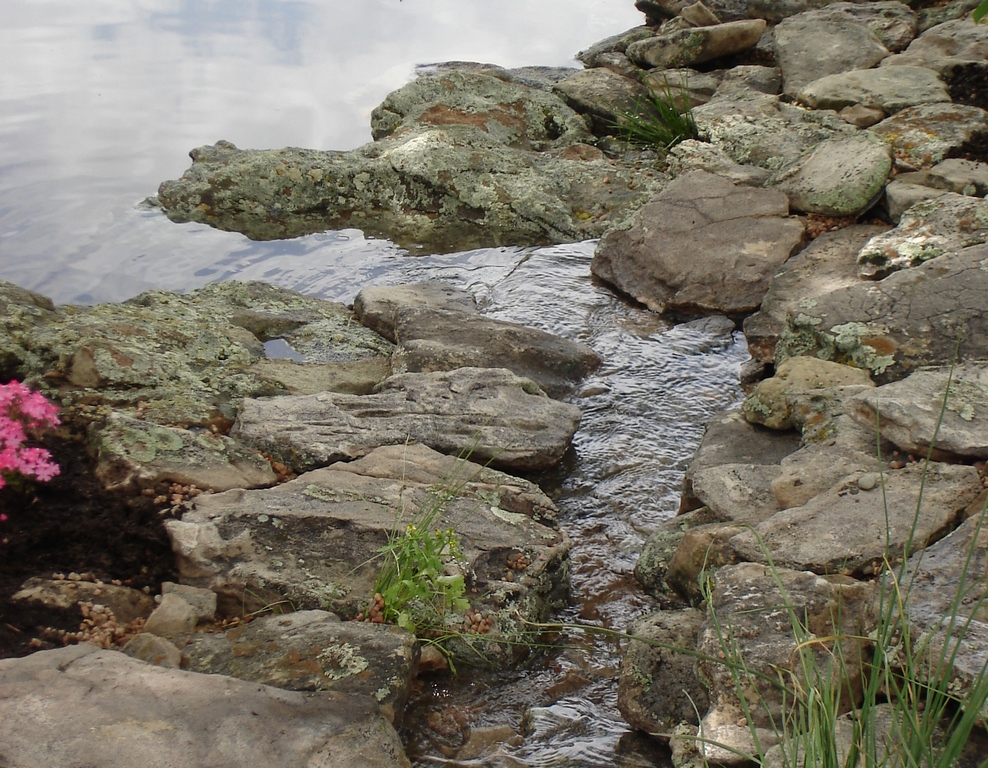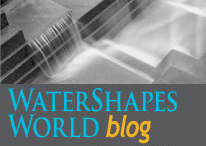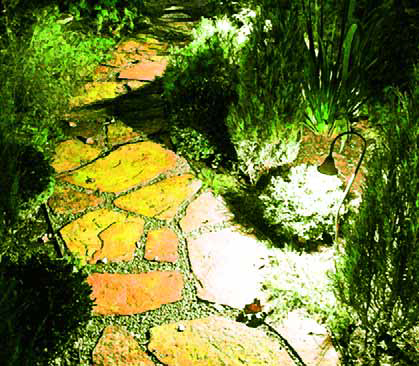THE ESSENTIAL E-NEWSLETTER FOR WATERSHAPE DESIGNERS, ENGINEERS AND BUILDERS February 5, 2020 www.watershapes.com FEATURE ARTICLE Working the Views As soon as he arrived on site,Jason Brownleeknew the project would be all about the amazing views. But his clients had more on their minds, asking him focus just as much on entertainment and distinctive gathering spaces […]
Tag: naturalism
Wilma’s Baubles
 By Dave Garton
By Dave Garton
Pond installation offers lots of opportunities for straying off the naturalistic path, but to me, there’s no more problematic detour than the unfortunate “string-of-pearls” effect.
When this happens, the edge of a pond looks more like Wilma Flintstone’s rocky necklace than it does like the banks of a natural body of water. And it’s a double shame, because the installer went to all the trouble of sourcing and placing natural material – but ended up with completely unnatural results.
I’ve seen too many of these nightmare ponds through the years. Some are the result of a do-it-yourselfer’s lack of awareness. It also happens with
2019/5.2, May 15 — Vision Lessons, Gravel Appreciation, D.C. Masterpiece and more
THE ESSENTIAL E-NEWSLETTER FOR WATERSHAPE DESIGNERS, ENGINEERS AND BUILDERS May 15, 2019 www.watershapes.com FEATURE ARTICLE Adopted Vision Building a project to another designer’s plan can be awkward when you notice flaws you might have helped address. In this case, notesTanr Ross, the results were truly spectacular — but assessing the ‘deficiencies’ taught him valuable lessons […]
Themes, Anyone?
 He’s a longtime believer in using naturalistic approaches in pond design and installation. But lately, Mike Gannon has also spent some time questioning that foundation — and wondering out loud if there might be value in looking at his design options in new and divergent ways.
He’s a longtime believer in using naturalistic approaches in pond design and installation. But lately, Mike Gannon has also spent some time questioning that foundation — and wondering out loud if there might be value in looking at his design options in new and divergent ways.
Artful Engagement
 By Jim McCloskey
By Jim McCloskey
This edition of WaterShapes EXTRA carries a link to one of my all-time favorite WaterShapes articles: “Living Art” by Philip di Giacomo and Mark Holden.
I remember how pleased Eric Herman was to land this particular story for our October 2004 issue. He’d been after di Giacomo periodically for years, and we both looked on Phil’s willingness to develop an article as
Making Light
 By Bruce Zaretsky
By Bruce Zaretsky
Those of us who are designers and builders of full-scale outdoor environments (you know who you are) face a distinct challenge: In our work for our clients, we are expected to provide the outline and details for a huge range of project elements, from watershapes and patios to plantings and walkways and more.
That list, at least so far as clients are concerned, also includes appropriate lighting, but that is not always something on which we focus. Indeed, lighting design is seen as a specialty even by those who tackle almost every other project feature – and there’s no problem with that unless
Making Light
 By Bruce Zaretsky
By Bruce Zaretsky
Those of us who are designers and builders of full-scale outdoor environments (you know who you are) face a distinct challenge: In our work for our clients, we are expected to provide the outline and details for a huge range of project elements, from watershapes and patios to plantings and walkways and more.
That list, at least so far as clients are concerned, also includes appropriate lighting, but that is not always something on which we focus. Indeed, lighting design is seen as a specialty even by those who tackle almost every other project feature – and there’s no problem with that unless
Natural Transference
By David Garton
Every year, it seems, I’m asked to teach more and more classes on how to build streams, waterfalls and ponds that look natural.
I enjoy conducting these sessions for local supply houses, landscape architecture firms, community colleges and other organizations and find it flattering that they value what I know. My motivation for sharing, however, is less about ego gratification than it is about my awareness that there’s no way a single company can build all of the naturalistic watershapes consumers want these days.
To me, it’s a matter of collective as well as personal interest that these watershapes be built to function well and look great. In Colorado in particular, I also see a need for work that appears completely and distinctly natural, simply because most clients here are accustomed to seeing remarkable beauty in the countless alpine settings that grace this beautiful state.
Indeed, it’s a fact of professional life here that the work must mimic nature closely or it just won’t fly. That can be very good for business, of course, but only if more than a few professionals hereabouts are up to the challenge.
Available projects range from those that use thousands of
The Clarity Class
 By Eric Herman
By Eric Herman
It only stands to reason that you can’t have a watershape without the water, but I sometimes wonder just how much watershapers really know about